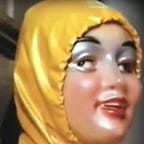Feminine Sexuality’s Grey Area
Note: the following was written in February 2015 on the occasion of the movie’s wide release.
I gasped as a friend snatched my laptop from me the other night. “You can’t! My porn is open!”
He laughed, delighted, and then his face dropped. “I don’t see anything.”
“It’s not, like… porn,” I said, realizing he was hoping to find a streaming video, a racy gif, or at least some still-image nudity. In inarticulate horror I confessed, “I was reading fanfiction.”
In the uproar over Fifty Shades of Grey, there is one fact that is either consistently forgotten or goes unrecognized for its weighty implications: this story was borne of fanfiction. As Christina Mulligan recently noted in the Washington Post blog PostEverything, it was borne of Twilight-based fanfiction, a story already infamous for its lead male stalker/control freak. While this does not necessarily absolve Fifty Shades of any thematic responsibilities, it does indicate that from its inception the story was a construction of fantasy. This is essential, as the function of this medium necessitates bending a preexisting story or characters, fictional or not, to the author’s will, thereby changing the context of the story entirely.
This element of fantasy is the common thread across fanfiction. The authors create stories for a variety of reasons, like engaging with characters and stories they love and placing beloved characters in new and interesting contexts according to the author and audience’s desires (which can be sexual or not). A quick Google search yields fanfiction of various ratings and codes: G to NC-17, or even X, and equivalent rating systems; trigger warnings; codes for sex, rape, bondage, alternate realities, etc. Whether the fantasy is sexual or not, this allows authors to exercise gratifying control over the objects of their devotion, which is possible only through fantasy.
The Fifty Shades of Grey fantasy is often recognized for the rise of what has been termed mommy porn (though how the story of a billionaire wunderkind and a college-age virgin constitutes “mommy porn” remains a mystery to me). In a piece for Entertainment Weekly, Leslie Bennetts reminds us that female desire has been a question mark for centuries and has only recently approached a position in which it is deemed worthy of understanding. The Fifty Shades trilogy is noteworthy in its apparent mass appeal, especially among women; well-written or not, the story is just as worthy of examination as it is undeserving of knee-jerk reactionist criticism. Author E. L. James has tapped into a little-recognized aspect of popularly-feminine desire that merits investigation.
The context of its creation and success colors interpretation of this pop culture landmark. Criticism of the movie as a misogynist text often views Fifty Shades of Grey as the story of a worldly (male) master manipulator coercing a naïve (female) college student into a sexual relationship rooted in the abuse of power. Now take a step back: author E. L. James has bent a notoriously misogynist text, Twilight, to her own whims and satisfied the desires of millions with her work. The characters are even recognizable, as Christina Mulligan points out in what ultimately amounts to the defense of fanfiction as its own art. In a time when even violent pornography is a click away from anyone with access to a computer, Fifty Shades of Grey hardly merits debate of this nature.
So who controls whom? A simplistic view admonishes the content of the story, but are we in a place and time in which women can afford to feel shame about sexual desire? Only a fool would deride a constructive exploration of feminine sexuality and its intricacies, and Fifty Shades of Grey is as relevant a landmark for exploration as any. Critics have made the story a scapegoat for female submission to abuse, but the faultfinding obviously precedes a close reading of book or film.
The renewed accusation that this now wide-released movie romanticizes an abusive relationship is an oversimplification. Forget for a moment that the relationship portrayed in the movie is consent-based (albeit hesitantly at times), and that this first installment ends with Anastasia leaving Christian and informing him that he will never touch her again. Forget that all of this is reason enough to dismiss as oversimplification the criticism that this movie romanticizes abuse. While others identify points to ridicule, I propose that the creation of the Fifty Shades story was an inherently feminist act, appropriating misogynist source material and molding it into the fantasies of millions of readers and viewers. It is the message seeking to dissuade the public, especially women, from tuning into their own sexuality that is guilty of perpetuating misogyny.
Leaving the theater after seeing the movie with my brother’s girlfriend, I was afraid she must have been disappointed. After all the hype, so much of the book’s (already over-hyped) raciness had been cut out. I asked her what she thought.
“It was like straight-up porn!” she said
I laughed. Maybe it would be in a better world.
***
Bennetts, L. (2015). The Dark Truth About Fifty Shades of Grey. Entertainment Weekly, (1350).
Fifty Shades of Grey. (2015). [DVD] Directed by S. Taylor-Johnson. Vancouver: Universal Pictures.
James, E.L. (2011). Fifty Shades of Grey. New York: Vintage Books.
Mulligan, C. (2015). The most scandalous part of ‘Fifty Shades of Grey’ isn’t the sex and bondage. [online] The Washington Post. Available at: https://www.washingtonpost.com/posteverything/wp/2015/02/11/the-most-scandalous-part-of-fifty-shades-of-grey-isnt-the-sex-and-bondage/ [Accessed 16 Feb. 2015].
